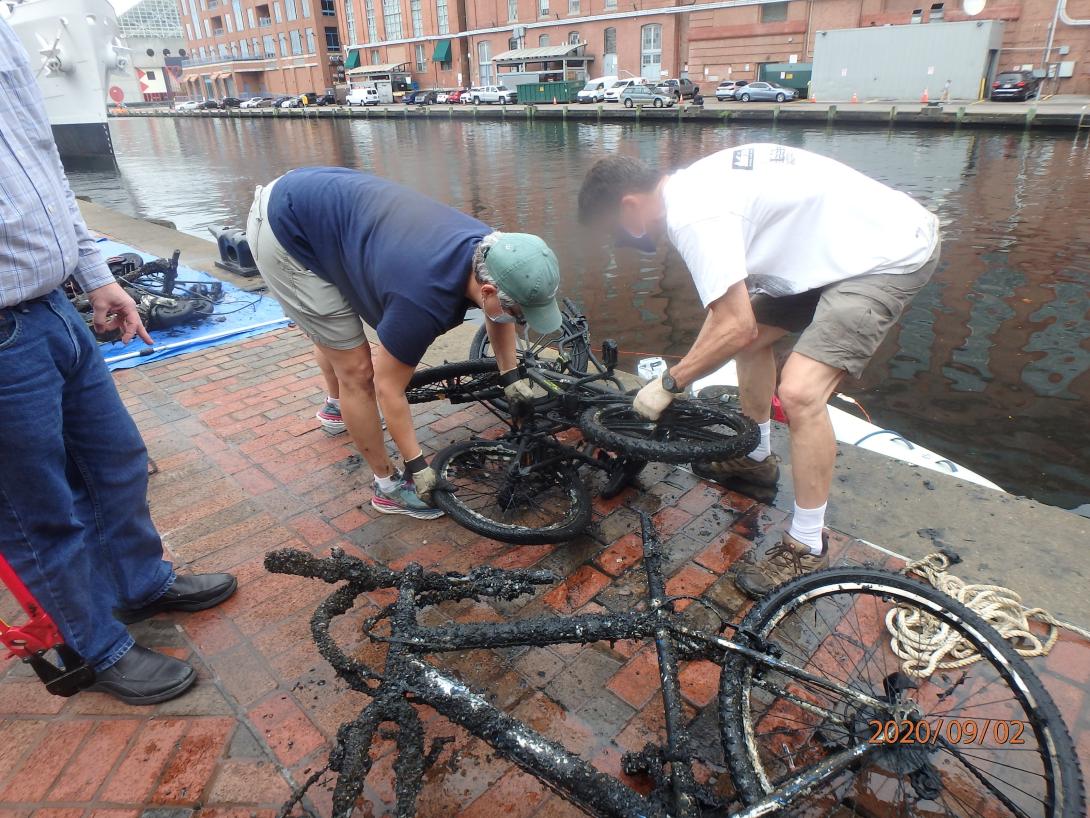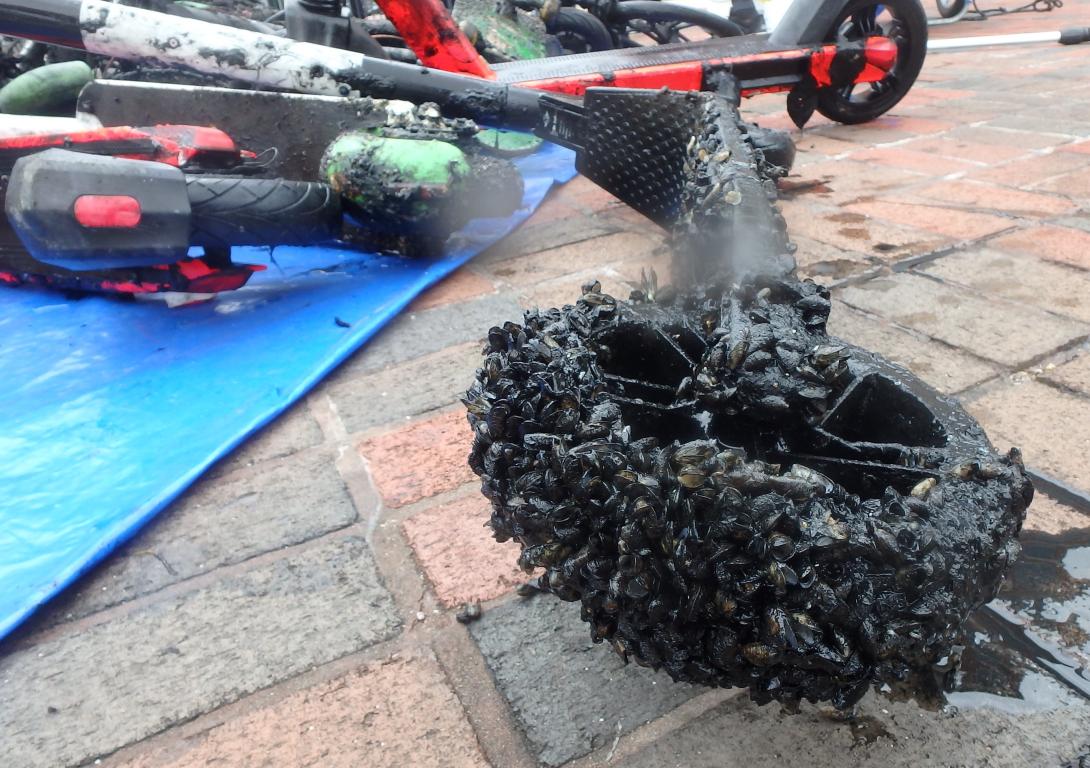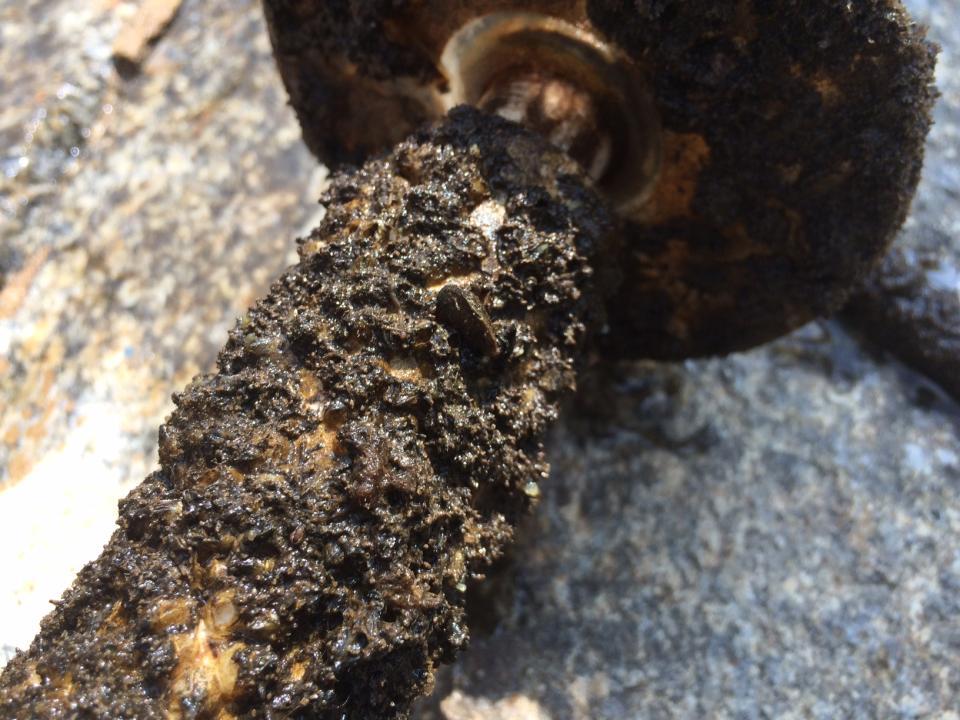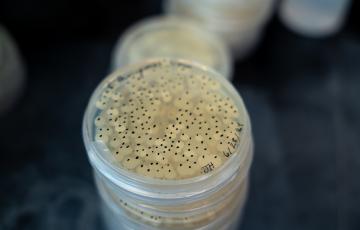Scooterpalooza!
Above: Volunteers from IMET and the National Aquarium pulled out 18 scooters, 5 bicycles, and 1 skateboard from Baltimore’s Inner Harbor, with some help from Blue Water Baltimore and the Waterfront Partnership. (from left to right: Christina Garvey, Charmaine Dahlenburg, Tsvetan Bachvaroff, Langston Gash, Mingli Zhao, Jack Cover, and Eric Schott) [photo by Olivia Pares]

Drs. Eric Schott and Tsvetan Bachvaroff have long been interested in what’s in Baltimore’s Inner Harbor. Usually, they’re looking for barnacles, mussels, and bryozoans, but in early September this year, they went searching for something else. Looking at the water every day for their research, Eric’s team observed an ever-growing pile of electronic scooters at the bottom of the harbor. Eric mentioned this to Jack Cover at the Aquarium, and the two of them hatched a plan to remove them in an event soon named “Scooterpalooza.”

In the time that these objects remained submerged in the water, they became artificial reefs, with fouling organisms growing on wheel spokes, tires, and handles. The abundance of mussels and barnacles observed on the scooters and bikes makes it clear that the harbor can be home to a lot of life, if there is structured habitat. Still, the scooter batteries and plastic parts should not be left in the water. With grappling hooks, a small boat, and a lot of elbow grease, the small team of volunteers successfully extracted eighteen scooters, five bicycles, one skateboard, and several other large metal objects.

Throughout the time the team was working, there were striped bass and menhaden swimming by. None of that was a surprise, as many of the people involved in Scooterpalooza have been documenting life in the harbor for several years, through underwater cameras placed on the National Aquarium’s floating wetlands as well as on discs placed in the harbor to observe what will grow. In this photo, you see just a few months of growth of fouling organisms. Several people at IMET, the National Aquarium, the Baltimore Underground Science Space, and other community volunteers have been documenting what organisms are there so we can help build a better picture of what’s living in Baltimore’s Harbor. Our hope for the future is more fish, crabs, and barnacles and fewer scooters!
Scooterpalooza came together because of strong connections between IMET and other organizations working toward a healthy ecosystem in Baltimore’s Harbor. Collaborators from the National Aquarium were instrumental, providing equipment and labor, and some excellent photography. The executive director of Bluewater Baltimore came to haul and take photographs to spread the message farther. The Waterfront Partnership provided a truck for carting the scooters to the Aquarium’s dumpster area. With help from the Baltimore City Department of Transportation, the companies that rent the scooters arranged to pick up and dispose of their products.
Two of the leaders of Scooterpalooza, Dr. Eric Schott (IMET) and Charmaine Dahlenburg (National Aquarium), gave a joint lecture on biodiversity in Baltimore’s Harbor in 2019. You can watch it here to find out more about why their studying this topic and what they’ve found.


